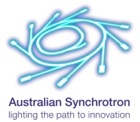Synchrotron Science
Synchrotron radiation is a powerful tool in a wide range of research fields such as physics, chemistry, biology, materials science, environmental science, nanoscience & technology, mechanical engineering, and electronics. Some applications have included studying the structure and dynamics of hard and soft matter, and biomaterials; chemical and physical information about surfaces and interfaces; analysis of trace element concentrations in micron-sized regions; measurements of local molecular structure in disordered systems; and image scans with micron resolution.
Techniques that are often used in synchrotron radiation facilities include photoemission or photoelectron spectroscopy (e.g. XPS, XAFS, EXAFS, NEXAFS), diffraction/scattering (e.g. XRD, SAXS, WAXS), and X-ray imaging.
Synchrotron research in this group is focused on surface and interface characteristics of nanomaterials, semi-conductive materials and minerals. Synchrotron facilities that are most frequently attended by the group include the Australian Synchrotron in Clayton, Melbourne; the National Synchrotron Radiation Research Centre (NSRRC) in Hsinchu, Taiwan; and the Advanced Photon Source (APS) at Argonne, Illinois, USA.
